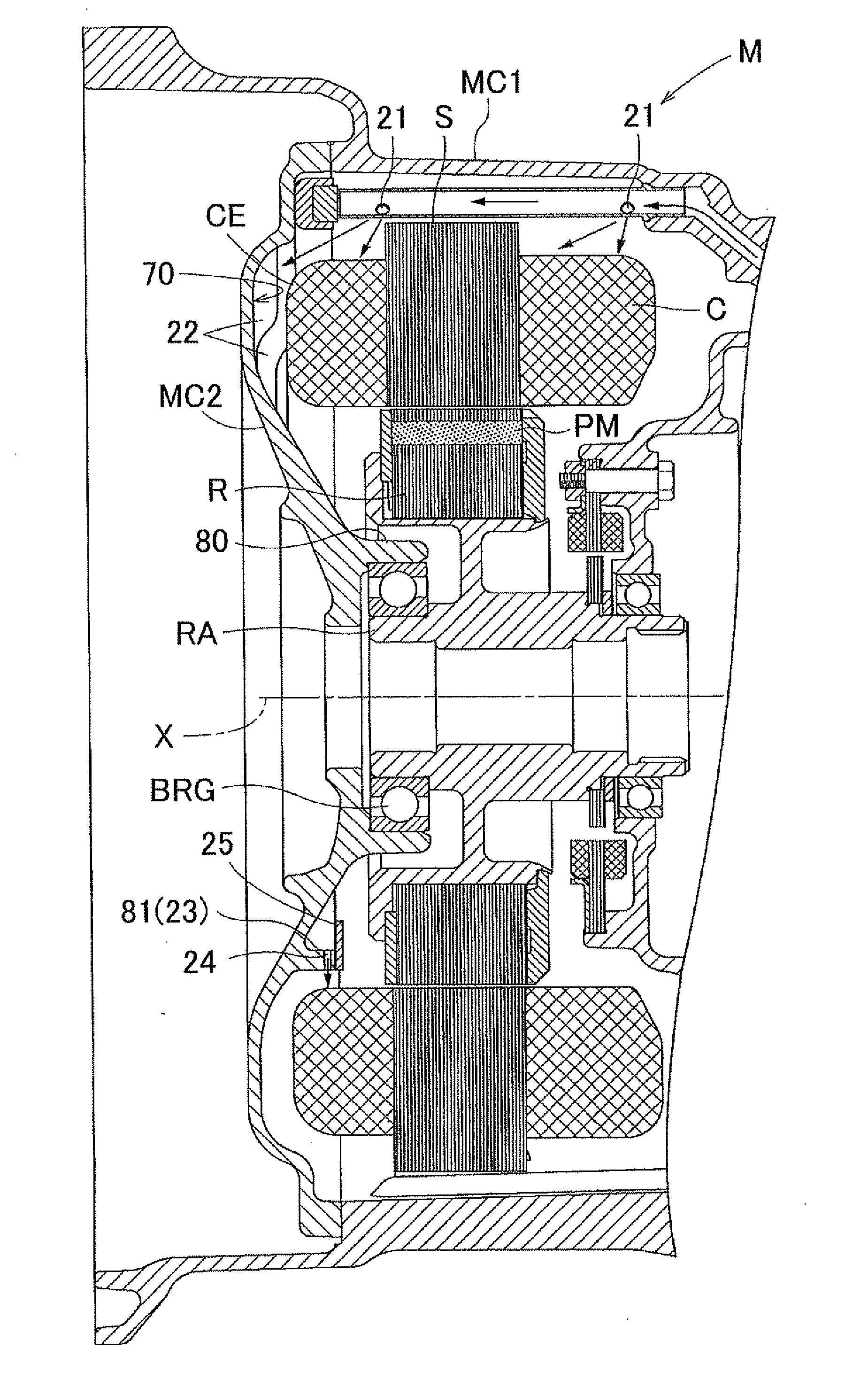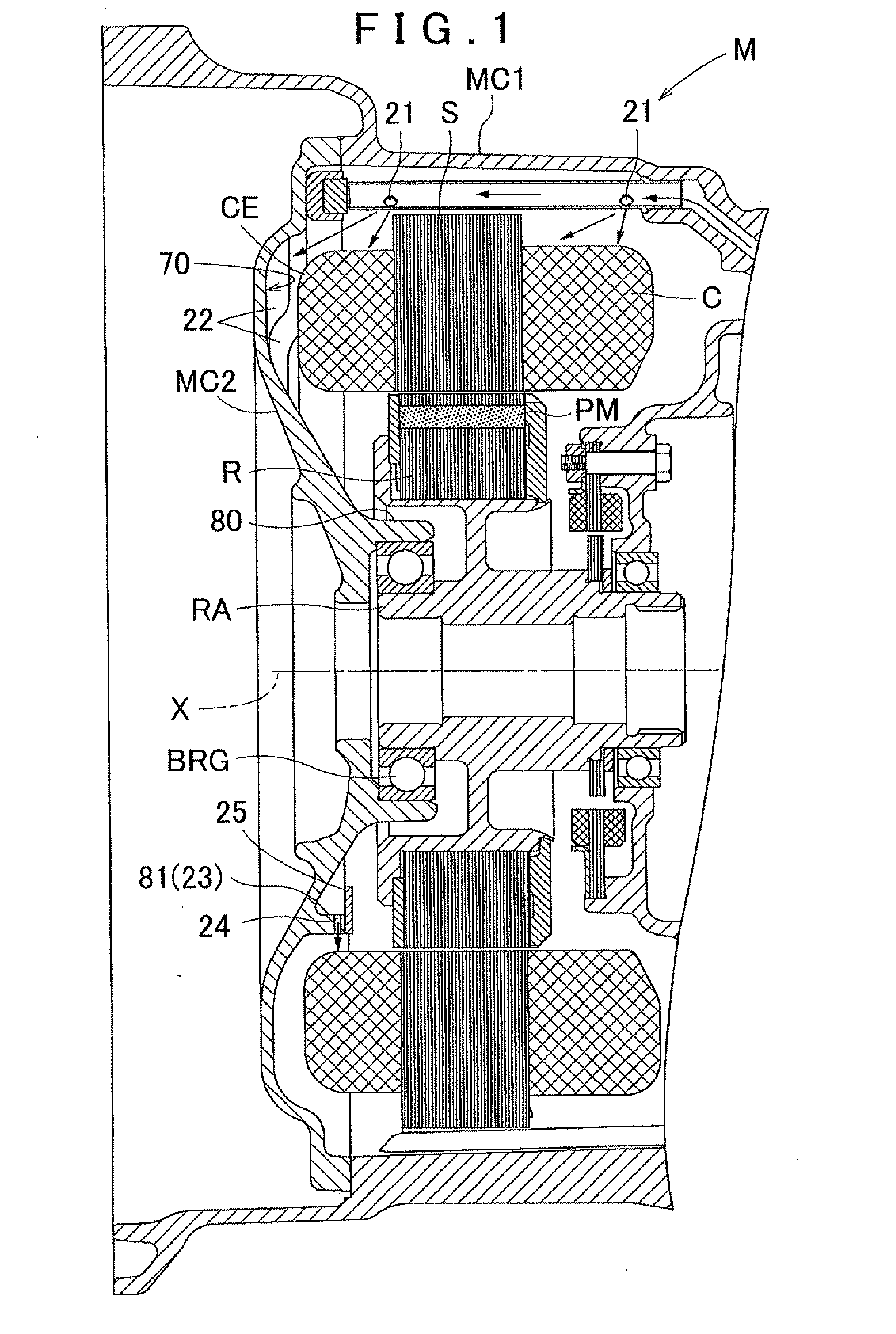Cooling structure for rotating electric machine
- Summary
- Abstract
- Description
- Claims
- Application Information
AI Technical Summary
Benefits of technology
Problems solved by technology
Method used
Image
Examples
first embodiment
1. First Embodiment
[0034]FIG. 1 shows a cross-sectional view of a rotating electric machine M to which the cooling structure according to the present embodiment is applied. As shown in FIG. 1, the rotating electric machine M is constituted such that a stator S and a rotor R are accommodated inside a space that is formed by a case body MC1 and a cover MC2 that covers an opening portion of the case body MC1. The stator S is fixed to the case body MC1.
[0035]The rotating electric machine M may output the driving force (rotary force) generated by the rotating electric machine M to outside the rotating electric machine M. In such case, the rotating electric machine M functions as an electric motor. By transmitting a driving force (rotary force) to the rotating electric machine M from outside, the rotating electric machine M may also function as a generator that generates power. The present embodiment will be described using an example in which the rotating electric machine M functions as ...
second embodiment
2. Second Embodiment
[0053]A second embodiment of the present invention will be explained next. In the above description of the first embodiment, the collection projecting portion 81 is configured so as to extend upward and radially outward from the outer circumferential surface of the support projecting portion 80. However, the collection portion 23 according to the present embodiment differs from the first embodiment in that the collection portion 23 is configured as separate from the support projecting portion 80. Also, in the above description of the first embodiment, part of the plurality of protrusion portions 22 is provided as connected to the collection projecting portion 81. However, the protrusion portion 22 according to the present embodiment differs from the first embodiment in that the protrusion portions 22 are all provided as separate from the collection projecting portion 23. The following description will focus on points where the protrusion portion 22 and the collec...
PUM
 Login to View More
Login to View More Abstract
Description
Claims
Application Information
 Login to View More
Login to View More - R&D
- Intellectual Property
- Life Sciences
- Materials
- Tech Scout
- Unparalleled Data Quality
- Higher Quality Content
- 60% Fewer Hallucinations
Browse by: Latest US Patents, China's latest patents, Technical Efficacy Thesaurus, Application Domain, Technology Topic, Popular Technical Reports.
© 2025 PatSnap. All rights reserved.Legal|Privacy policy|Modern Slavery Act Transparency Statement|Sitemap|About US| Contact US: help@patsnap.com



